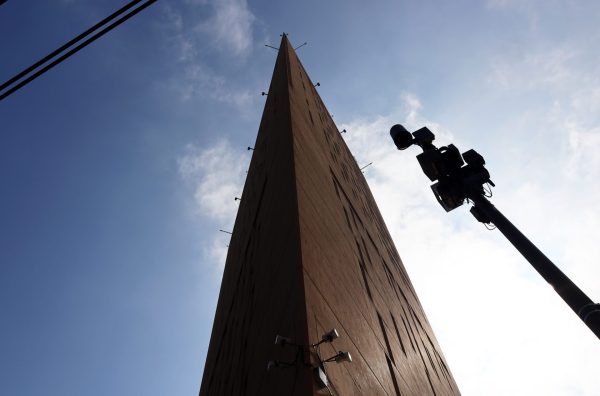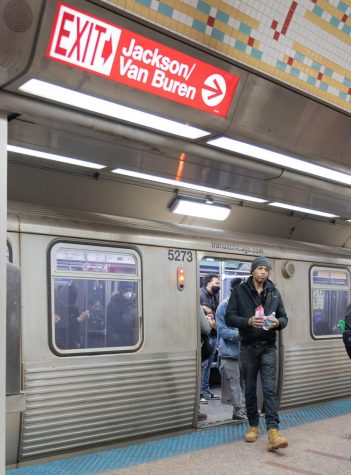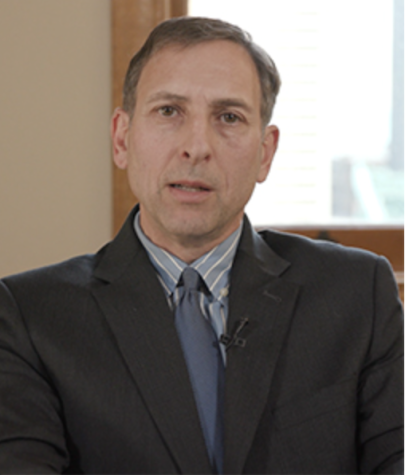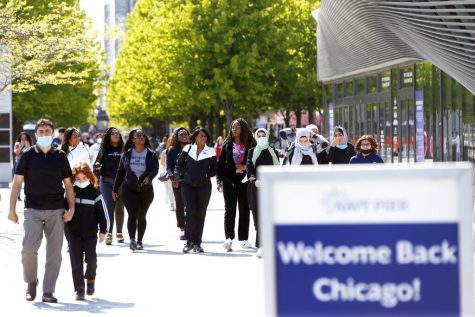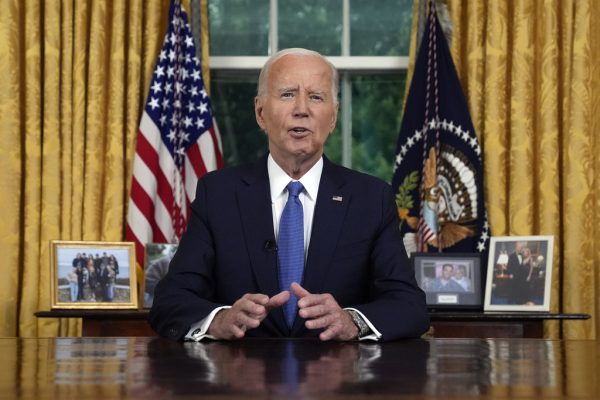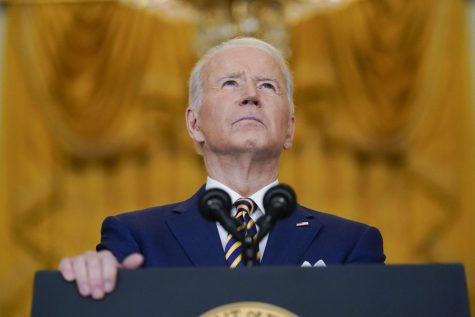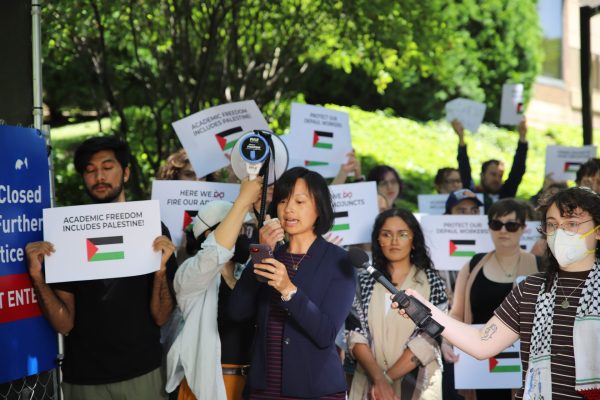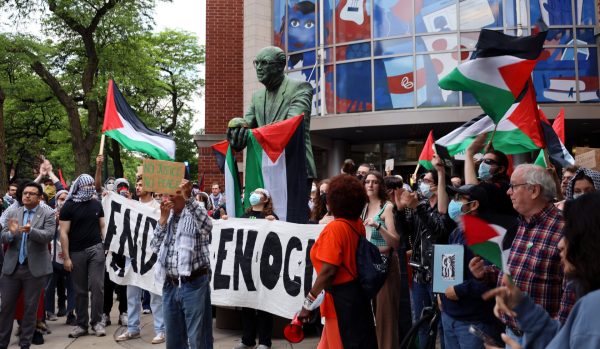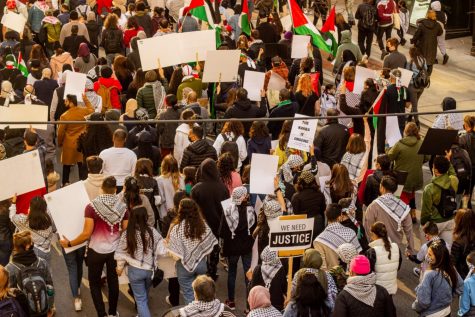Chicago reflects on King more than 50 years after Marquette Park violence
A visitor looks over drafts of King’s letters in the exhibition about his time in Chicago.
In an all-white Marquette Park on Aug. 5, 1966, Martin Luther King, Jr. was struck by a rock while protesting housing segregation. The civil rights leader and his supporters were met with extreme hostility by white residents and the march resulted in 30 injuries and 40 arrests.
“I have seen many demonstrations in the South, but I have never seen anything so hostile and so hateful as I’ve seen here today,” King said to the Chicago Tribune afterward.
In the South, he said, the history of Jim Crow kept the lines of segregation clear. In the North, segregation was blurry and messy from years of racially-motivated policy.
Chicago has a particularly deep civil rights history and connection to the late Dr. King, who would have turned 91 yesterday. The city celebrated Martin Luther King, Jr. Day on Monday, Jan. 20, commemorating his work and focusing on what there is left to do.
King and the Southern Christian Leadership Conference turned their attention to Chicago in January 1966 with the Chicago Freedom Movement, an effort to shed light on the conditions of blacks in the north.
King appropriately chose Chicago, a city that today remains one of the country’s most segregated. He moved his family to the neighborhood of North Lawndale in 1966 and began working to address issues of housing access and racial inequality in Chicago.
The Chicago History Museum showcased King’s legacy with its annual MLK Jr. Day celebration. The family-friendly five-hour event featured crafts, storytelling, a performance by the Chicago Chamber Choir and a reenactment of King’s “I Have a Dream” speech.
The event celebrates its 37th year in 2020. Since 1983, the museum has taught many Chicago children and residents the impact King has had on the civil rights movement. It was an easy decision to begin the annual celebration in 1983 after President Ronald Reagan signed the national holiday into law. But because of his polarizing opinions on civil rights, the process of making Martin Luther King, Jr. Day a national holiday was arduous. This process was an uphill battle — it was not finally recognized by all 50 states until 2000.
South Carolina was the final state to recognize the holiday, after a massive protest by African American leaders in 1999, when over 46,000 protestors gathered against a confederate flag flying at their State House Dome.
The fight for recognition makes the celebration of this day even more meaningful.
“The value of a history museum like this gives you something in the present to reflect on the past even though there is still a lot that can still be done,” said Dean Rodkin, a volunteer at the museum since 2006 and a former south suburban teacher. “That’s a significant thing and specifically with him. The country today is very divided, polarized like it was back in his day, and I think that’s a significant value of today.”
The day’s festivities began with some kid-friendly arts and crafts activities with artist Sue Romanelli. The children were asked to doodle and create art that helped them express what King means to them. As they day went on, the kids were repeatedly reminded of King’s mesmerizing speeches and life-altering sacrifices he made that occurred not only in Chicago, but around the country, before many of their parents were even born.
Storyteller Gwen Hilary and musician Enoch Williamson took the children on a bit of a wild ride as they taught the kids about King’s upbringing and his efforts towards social change. After, a more mature theater production was put on to contextualize King’s journey in a more modern sense. A review of this one-woman play can be found on page 5.
More than 50 years after his death, King’s legacy lives on as a fierce advocate for social change and a martyr for equal rights of African Americans. In Chicago, he is immortalized on the South Side’s Martin Luther King Jr. Drive. Across the country, he is remembered best for his rhythmic and robust verbiage in his “I Have a Dream” speech.
“He had the personality, charisma and ability to galvanize the country and pull it together, not fragment it,” Rodkin said. “He captured the whole country, and it’s something that I don’t know if we have today. That’s the value in remembering him.”



